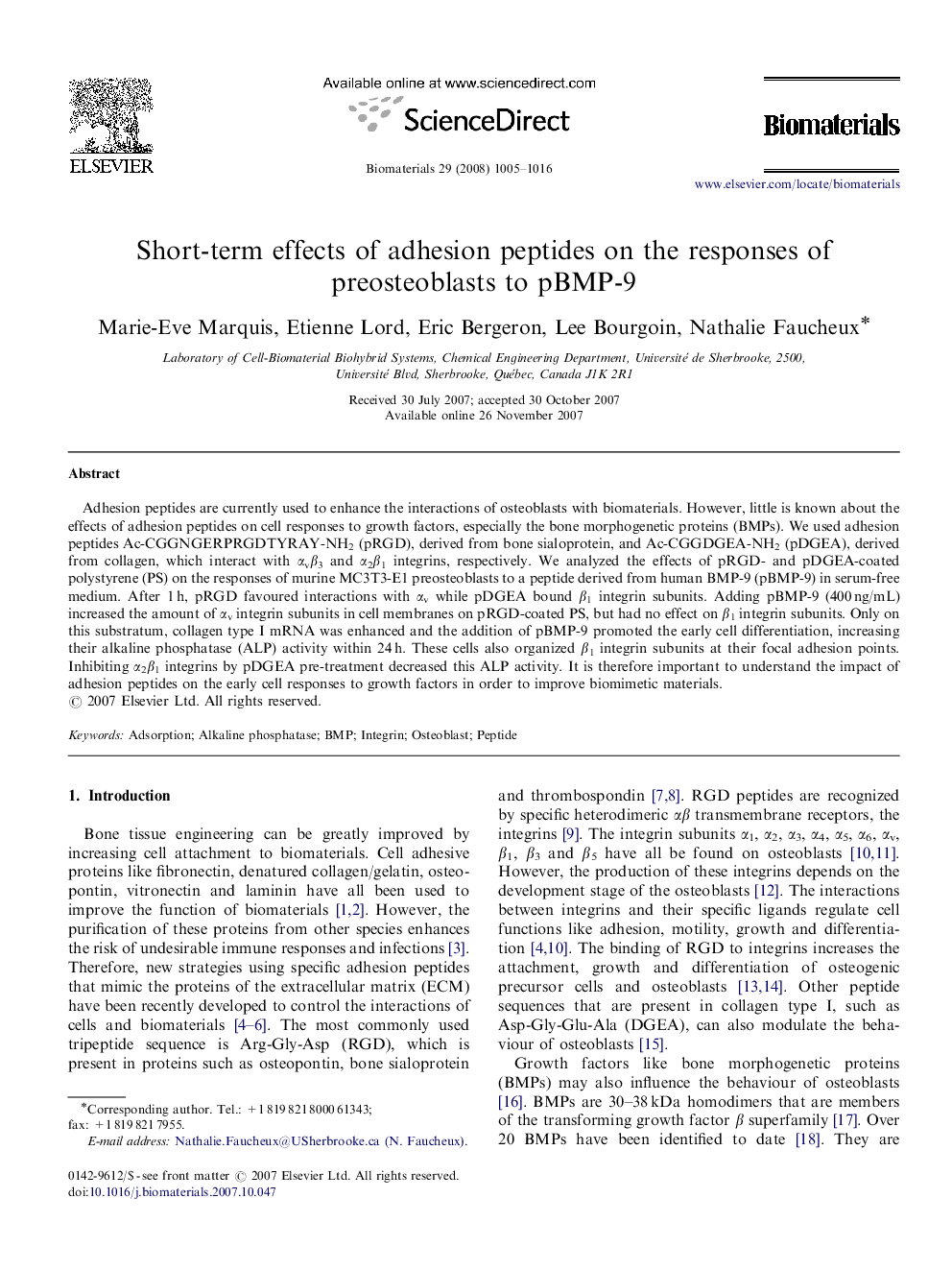| Article ID | Journal | Published Year | Pages | File Type |
|---|---|---|---|---|
| 11252 | Biomaterials | 2008 | 12 Pages |
Adhesion peptides are currently used to enhance the interactions of osteoblasts with biomaterials. However, little is known about the effects of adhesion peptides on cell responses to growth factors, especially the bone morphogenetic proteins (BMPs). We used adhesion peptides Ac-CGGNGERPRGDTYRAY-NH2 (pRGD), derived from bone sialoprotein, and Ac-CGGDGEA-NH2 (pDGEA), derived from collagen, which interact with αvβ3 and α2β1 integrins, respectively. We analyzed the effects of pRGD- and pDGEA-coated polystyrene (PS) on the responses of murine MC3T3-E1 preosteoblasts to a peptide derived from human BMP-9 (pBMP-9) in serum-free medium. After 1 h, pRGD favoured interactions with αv while pDGEA bound β1 integrin subunits. Adding pBMP-9 (400 ng/mL) increased the amount of αv integrin subunits in cell membranes on pRGD-coated PS, but had no effect on β1 integrin subunits. Only on this substratum, collagen type I mRNA was enhanced and the addition of pBMP-9 promoted the early cell differentiation, increasing their alkaline phosphatase (ALP) activity within 24 h. These cells also organized β1 integrin subunits at their focal adhesion points. Inhibiting α2β1 integrins by pDGEA pre-treatment decreased this ALP activity. It is therefore important to understand the impact of adhesion peptides on the early cell responses to growth factors in order to improve biomimetic materials.
